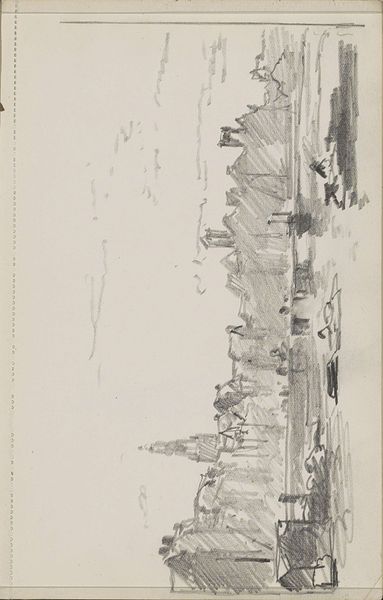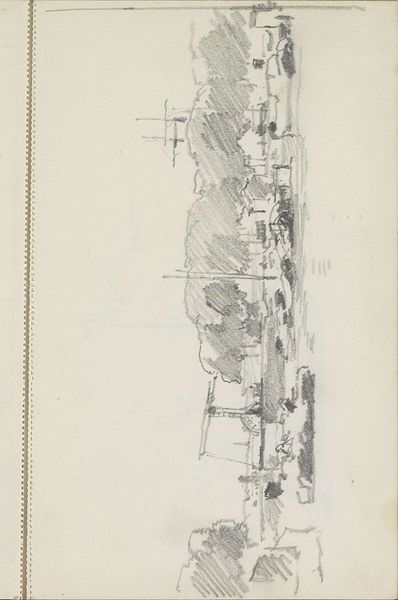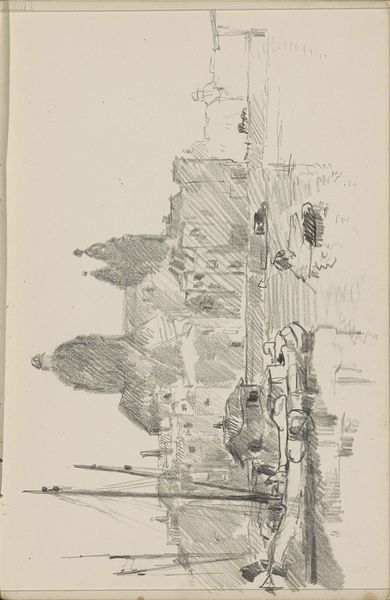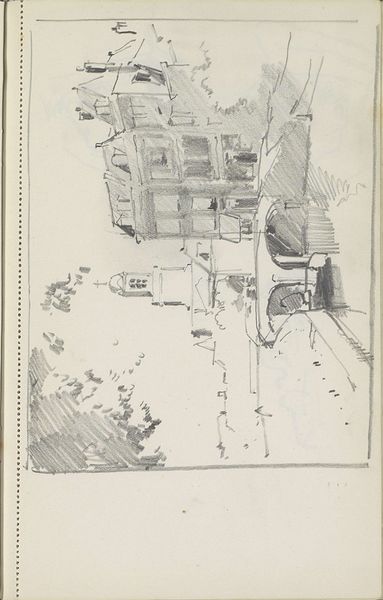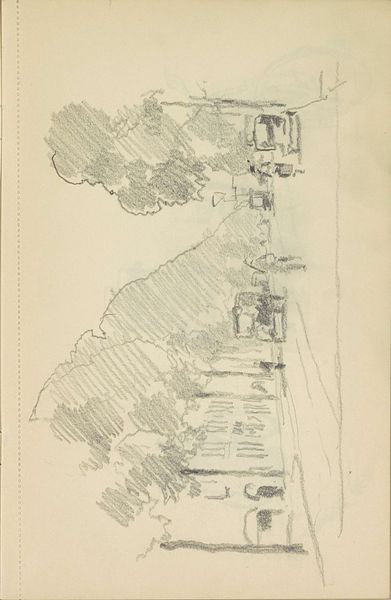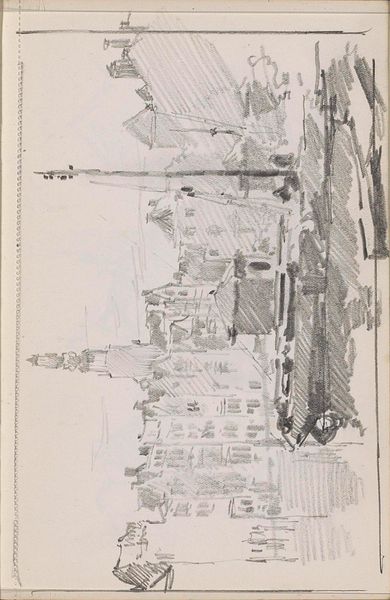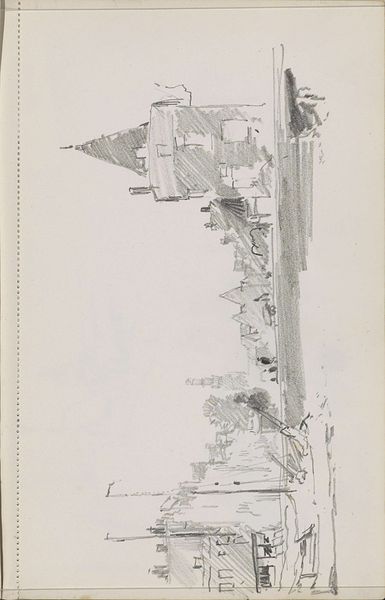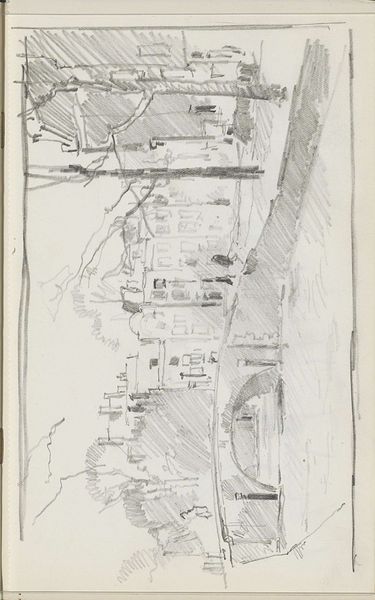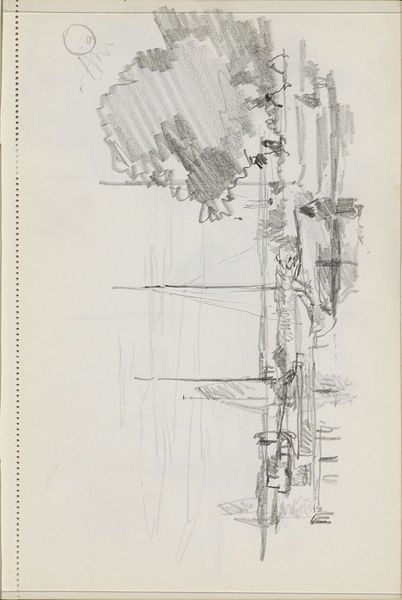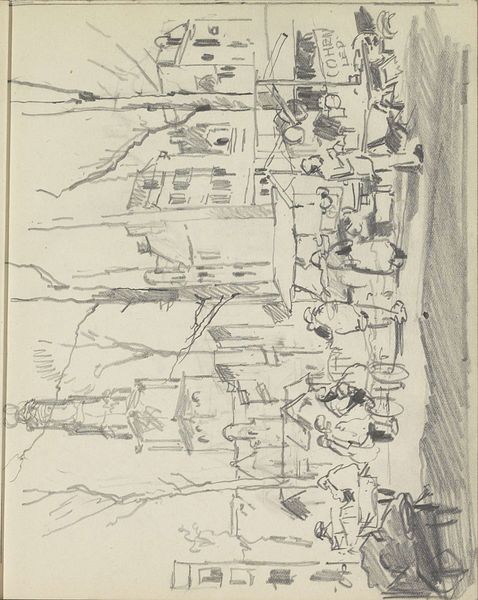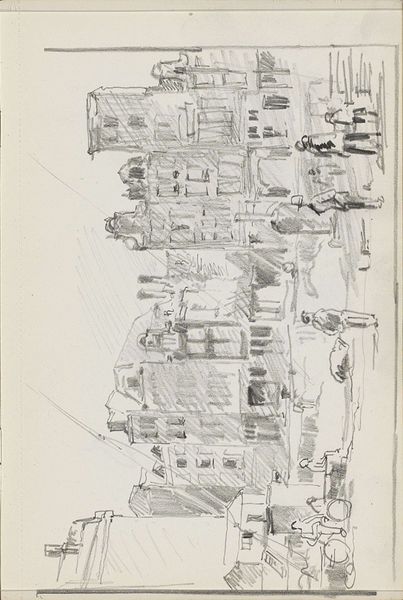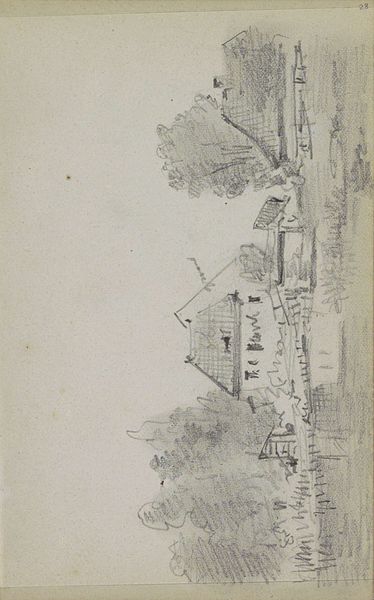
drawing, paper, pencil
#
drawing
#
pen sketch
#
landscape
#
paper
#
pencil
#
cityscape
#
realism
Copyright: Rijks Museum: Open Domain
Editor: So, this is "Ronde Lutherse Kerk aan het Singel te Amsterdam," a pencil and pen drawing on paper by Cornelis Vreedenburgh, sometime between 1890 and 1946. It's striking how the dome of the church dominates the cityscape. What's your interpretation? Curator: I see a fascinating document of Amsterdam's evolving urban landscape and the role of religious architecture within it. The Lutheran Church, prominently featured, stood as a symbol of a specific religious community navigating its place in Dutch society. Think about the public function of this building. What statement was the Lutheran community trying to make by positioning such a structure along the Singel? Editor: That's a good point. It does seem deliberately positioned, almost asserting its presence. So, it’s not just about the architecture, but about making a statement. Curator: Exactly. And consider the date: between 1890 and 1946. This period saw significant social and political shifts in the Netherlands. This drawing isn’t merely a depiction of a building; it reflects the social fabric of Amsterdam during that era, and the role of art in portraying those urban transformations. What message do you think this artist tries to capture by depicting an ordinary daily life against such important architectures? Editor: I suppose it grounds the grandeur, showing how everyday life continues, regardless of grand architecture or societal changes. Curator: Precisely. By capturing that contrast, the drawing offers insights into the social dynamics and power structures embedded in the city’s visual environment. What new thoughts do you have after seeing this work? Editor: It makes you consider art's role as not just aesthetic, but also social commentary, reflecting the evolving identity of the city and its inhabitants. Curator: Indeed. It reveals how much history can be layered into what seems like a simple sketch of a building.
Comments
No comments
Be the first to comment and join the conversation on the ultimate creative platform.
